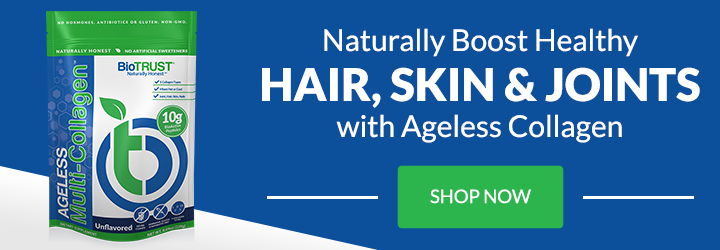Everything You Need to Know About Creatine

If you’ve ever been interested in fitness or sports, you’ve probably heard about creatine. This popular supplement is used to help improve recovery and promote muscle size and performance. Yet creatine isn’t just for people looking to build muscle. This well-studied nutrient has been found to have numerous other benefits for improving health.
What Is Creatine?
Creatine is an amino acid found mostly in the body’s muscle cells. But it’s also found in other tissues. Most of us get creatine through food, such as seafood, red meat, chicken, and milk. The body also produces creatine—about one gram per day—in the liver, pancreas, and kidneys from the amino acids glycine and arginine. Creatine is used as fuel for energy in muscle cells and other tissues, especially during heavy lifting or high-intensity training.
When speaking about creatine, though, most people are talking about the powdered supplements. Creatine gained popularity for improving athletic performance and boosting muscle size and strength in the 1990s. Since then, creatine has also been found to be beneficial for brain health, neuromuscular conditions, heart health, and even aging skin.
How Is Creatine Stored in the Body?
Around 95% of the creatine in the body is stored within muscles as phosphocreatine. The final 5% is found mostly in the brain and testes. Creatine is typically supplemented as creatine monohydrate, which is the most readily available form according to research. The creatine is broken apart in the body and used to produce ATP (adenosine triphosphate) for energy or stored as phosphocreatine to later create ATP during exercise sessions.
The more ATP your muscles have, the more energy they have to power you through your workouts or sport. So, the greater the amount of creatine stored in muscles, the longer it can takes for your muscles to fatigue.1
Research on Creatine
Creatine is by far one of the most well-studied supplements available.2 Research has demonstrated positive effects of creatine on:
In addition, creatine supplementation may increase the levels of muscle-building hormones like IGF-1, boost muscle cell hydration and volume, reduce the breakdown of protein, and lower levels of myostatin (which can slow muscle growth)—all of which may help promote an increase in muscle size and strength.3, 4, 6 – 9
For instance, some research has found that creatine can help increase the growth of muscle fibers by up to three times more than just weight training alone.10 Other research shows an increase in muscle fibers, but not as significant.11
Interestingly, creatine doesn’t just help healthy young weightlifters gain muscle. One review study found that even without resistance training, creatine may help improve muscle mass and strength in older adults, helping reduce their potential for falls.3, 12
- – Weight trainers enhanced muscle strength and endurance when supplementing with creatine.14
– Cyclists increased power outputs when sprinting for better breakaways.15
– Soccer players saw improvements in jumping, sprinting, and power.16, 17
– Swimmers were able to improve power development, improving the butterfly and breaststroke in particular.18
Because creatine helps increase ATP during intense activity, it could help enhance optimal performance in virtually any sport.19
Because creatine supplements may increase the amount of creatine in brain tissues, this may supply the energy the brain needs to function and repair. One meta-analysis (a compilation of studies) found the biggest improvements were with individuals over the age of 66.27 Hopefully, we’ll continue to see more research into creatine’s potential benefits for brain health in the future.
Additional research is investigating whether creatine may be helpful for various disease states, such as heart disease, by increasing blood flow and increasing muscle strength. It’s also being studied with women, particularly those who are post-menopausal, to see if it helps improve strength, bone density, mood, and brain functioning. Other research is being done to see its effects on nonalcoholic fatty liver disease and stroke-related damage.2, 33 – 35
What About Creatine Side Effects?
When creatine first became popular, there was some concern that it could cause water retention, dehydration, or muscle cramping or that it may not be safe for the kidneys. Fortunately, the research has found these claims lack any evidence.36, 37
Creatine, in fact, is one of the most tested supplements worldwide with over 500 peer-reviewed studies. And when reviewing the studies, creatine’s safety profile has been found to be excellent. Thus, creatine is generally considered safe when taken as recommended.38
The one well-known side effect of creatine is weight gain as creatine helps shuttle water into muscle cells and can increase muscle size. However, this is less of a side effect and more of the benefit many athletes seek. And according to research, it also typically leads to only small weight gains of about a pound or two.38
That said, because the kidneys filter and break down amino acids, creatine is not recommended for people with pre-existing kidney disease.39
How to Take Creatine
In the past, the general recommendation was to start with a loading phase with up to 25 grams of creatine per day split into 5 separate servings for 5 to 7 days. Next, you would consume a maintenance amount of 3 to 5 grams per day. This was the dosage recommendation to improve athletic performance as well as muscle size and strength.
Today, more research suggests the loading phase isn’t needed, especially if you’re using creatine to stave off the loss of muscle common as you get older or if you’re using it to support brain functioning. Positive results have been demonstrated with less than five grams of creatine per day.40, 41 At these recommended amounts, you should maximize the creatine stores in your body within two to four weeks.35, 38 Plus, taking more creatine than needed may lead to diarrhea, nausea, gas, and cramping.
Take your creatine immediately before or during exercise to help fuel your activities, especially high-intensity workouts. It appears to be most effective when combined with carbs and proteins, so it’s popular to include creatine in a high-protein pre-workout smoothie.42, 43
One of the easiest, most convenient ways to take creatine is to simply mix it into a glass of water. It can also be stirred in other powdered supplements (with water), protein shakes or smoothies, applesauce, oatmeal, etc. As always, make sure you’re drinking enough water.
Some experts recommend avoiding caffeine (such as in a cup of coffee) with creatine; however, the research on whether or not caffeine makes creatine less effective is inconclusive.
While creatine is best known for its muscle-building benefits for athletes, it appears to have a whole host of other benefits supported by science. It’s easy to use and has a long history when it comes to safety and effectiveness.





 7 Signs Your Body is Seriously Low on Collagen (not just wrinkles)
7 Signs Your Body is Seriously Low on Collagen (not just wrinkles) Health Expert: "Turmeric Doesn't Work (unless...)"
Health Expert: "Turmeric Doesn't Work (unless...)" 3 Warning Signs Your Probiotic Supplement is a Total Waste
3 Warning Signs Your Probiotic Supplement is a Total Waste

